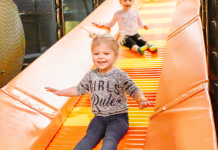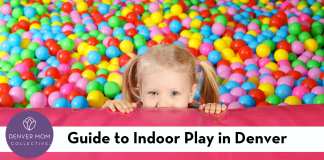This post is sponsored by Little Sunshine’s Playhouse and Preschool. Check out their newest location coming soon to Arvada.
If you’re a parent or loved one who is greatly invested in the development of a sweet child, you’ve probably spent a great deal of time researching and looking into the best possible child care facilities, curriculums, theories and preschools for your child. This can be an exhausting and overwhelming task, which is why we have summed up our favorite learning path for you!
We love the play-based learning model (we may be a bit biased to the up and coming Reggio Emilia Approach) and can’t wait to share it with you. In this post, we answer all of your questions regarding the in’s and out’s of play-based learning and how it would benefit your child. So, grab your coffee, whether it’s a fresh brew or has been rewarmed three times already and settle into the exciting adventure of play-based learning and the different approaches available.
What Is Play-Based Learning?
We view play-based learning for preschoolers as a beautiful approach to learning that celebrates the power of play in our little one’s growth and development. Children and parents alike adore this delightful way to learn and explore at their own pace, while getting to have heaps of fun along the way.
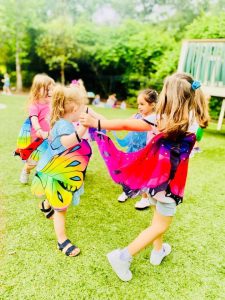 There is plenty of time to be stuck at a desk in a school environment when kids get older and grow into working adults. So why start at such a young age? In this playful learning environment, teachers create a magical space filled with exciting activities and materials that inspire your child’s imagination, curiosity, and creativity. From building blocks to pretend play, each day is filled with opportunities for your little one to engage, experiment, and discover new things.
There is plenty of time to be stuck at a desk in a school environment when kids get older and grow into working adults. So why start at such a young age? In this playful learning environment, teachers create a magical space filled with exciting activities and materials that inspire your child’s imagination, curiosity, and creativity. From building blocks to pretend play, each day is filled with opportunities for your little one to engage, experiment, and discover new things.
“Play is not just about having fun, but about taking risks, experimenting, and testing boundaries.”
– American Academy of Pediatrics
Our Favorite Benefits Of Play-Based Learning
We wouldn’t love this avenue of learning if it didn’t come with some amazing benefits right? From cultivating their overall development to learning how to interact with others appropriately, the benefits are endless when it comes to play-based learning curriculums for preschoolers.
It Nurtures Overall Development
The special benefits of play-based learning is that it nurtures your child’s overall development. As they dive into hands-on activities, they naturally enhance their cognitive, physical, social, emotional, and language skills. Children learn to solve problems, think critically, and express themselves, all while playing and enjoying themselves.
Cognitive Development and Abstract Thinking Flourish
Cognitive abilities and abstract thinking flourish in a play-based learning environment by encouraging imaginative play. Kiddo’s imaginations are allowed to soar as they engage in pretend play and the creation of their own fantastical stories.
Learning Through Social Interactions
Another wonderful aspect of play-based learning is the social interaction it fosters. Little ones’ have the opportunity to make friends, share, take turns, and work together. Through these interactions, they develop crucial social skills such as empathy, communication, and cooperation. It’s truly heartwarming to see them grow into kind, compassionate, and confident individuals.
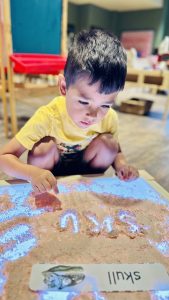 Increased Joy And Motivation
Increased Joy And Motivation
It’s been found that when learning is intertwined with play, a child’s natural curiosity and love for exploration is sparked. They eagerly engage in activities, fueled by their own excitement and interest. Learning becomes an adventure they look forward to every day.
Showcases The Child’s Unique Qualities
We love that play-based learning embraces and celebrates the fact that no child is the same. Preschools, such as Little Sunshine’s Playhouse and Preschool, that use a play-based learning curriculum honor each child’s learning style, interests, and abilities without trying to place them in a box where their own uniqueness starts to dim. With this approach, teachers can tailor their guidance and support to meet your child right where they are, ensuring they get the individualized attention they need to thrive while praising the differences each child brings to the table.
“In Reggio, the process of learning involves making connections and relationships between feelings, ideas, words and actions.” -Debbie LeeKeenan and John Nimmo
Examples Of Play-Based Learning Preschool Curriculum
Choosing the right preschool curriculum for your child is an exciting journey filled with possibilities. Two popular approaches, Reggio Emilia and Montessori, offer unique philosophies and methods to nurture your little one’s growth and learning. Read on as we dive into the distinctions between these two wonderful play-based learning options.
The Reggio Emilia Approach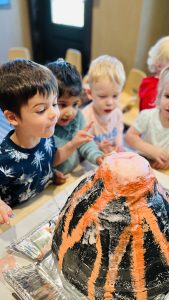
In the Reggio Emilia approach, your child is seen as a capable and active learner. This curriculum places a strong emphasis on fostering creativity, curiosity, and self-expression. It celebrates your child’s natural desires to explore and investigate the exciting world around them in a flexible environment where teachers are more like guides than instructors.
What Does A Reggio Emilia Classroom Look Like?
In Reggio Emilia-inspired classrooms, that can be found in preschools such as Little Sunshine’s Playhouse and Preschool are filled with inviting and thoughtfully arranged environments. These spaces are carefully designed to spark your child’s imagination and curiosity. Materials such as art supplies, natural elements, and open-ended toys are carefully selected to encourage your child’s exploration and creative expression.
What Key Values Are Part Of The Reggio Emilia Approach?
Reggio Emilia was historically founded upon the realization that children use “100 languages” to communicate. The Reggio Emilia approach looks at every line of communication a child may use to express themselves to get their needs and wants related to their listeners. This approach values verbal and nonverbal communicationschildren use to communicate.
Collaboration and social interaction are highly valued in the Reggio Emilia approach. Kiddos will have ample opportunities to work on projects and engage in group activities with their peers. Through these creative experiences, they develop essential communication skills, teamwork, and empathy for others.
Within the Reggio Emilia curriculum documentation plays a significant role. The young childs’ learning journey is captured and documented through photographs, videos, and written observations. This documentation not only serves as a precious keepsake for you but also helps teachers gain insights into your child’s interests, progress, and areas of growth.These milestones are used during collaborative meetings and assist with the notion of letting the child drive the learning process.
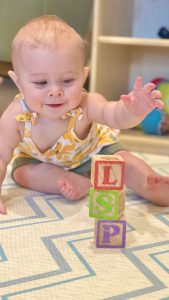 The Montessori Approach
The Montessori Approach
While the Montessori approach to play-based learning is a little more well known here in the U.S, there are some distinct differences. Inspired by Dr. Maria Montessori, the Montessori Approach focuses on fostering independence, self-directed learning, and a deep respect for each child’s unique development, similar to the Reggio Emilia approach. But, it provides these values through a more structured environment. While the child is still awarded freedom to choose, they are limited to a range of carefully designed learning materials.
What Do Montessori Classrooms Look Like?
Montessori classrooms are known for their order and simplicity. They are equipped with Montessori materials that are specifically designed to promote hands-on exploration and independence. From sensorial materials to practical life activities, each material is meticulously crafted to support your child’s physical, cognitive, and social development.
In Montessori classrooms, uninterrupted blocks of work time are provided, allowing your child to engage in activities for extended periods. This promotes concentration, focus, and the development of essential executive functioning skills. Your child is encouraged to work at their own pace and explore various subjects at their own rhythm.
What Are Key Aspects Of The Montessori Approach
Similar to the Reggio Emilia approach, Montessori curriculum emphasizes individualized learning. The key difference being that in the Reggio Emilia approach the teachers are viewed more as guides or partners, whereas the Montessori teachers are used more as directors. Teachers observe your child closely, identifying their interests and learning styles, and then guide them towards activities that suit their unique needs.
Making The Final Decision
Deciding on which approach is best suited for your child is no easy task. Remember, both Reggio Emilia and Montessori share a child-centered philosophy, valuing your child’s natural curiosity, creativity, and independence. However, they differ in their approach to the learning environment, materials, and documentation.
As you explore these wonderful preschool curriculum options, consider your child’s unique personality, learning style, and your family’s values. Visit local schools such as Little Sunshine’s Playhouse and Preschool, talk to teachers, and trust your instincts to find the curriculum that resonates most with you and your child.
Remember, the most important thing is to provide a nurturing and engaging environment where your child can thrive, feel loved, and develop a lifelong love for learning!”
References
- What Is Reggio Emilia? Your Guide to This Child-Driven Approach [1] Brianna Flavin, May 24, 2020, retrieved on May 16, 2023 from www.rasmussen.edu
- How-To-Guide: Reggio- Inspired Documentation [2] May 17, 2022 retrieved on May 17, 2023 from www.rootsandwingsfc.com
- 5 Reggio Emilia Approach Values Reflected in a Creative Curriculum Classroom [3] Erin Seagraves May 17, 2022 retrieved on May 17, 2023 from www.teachingstrategies.com
- Reggio Emilia vs. Montessori: A Parent’s Guide to Choosing Between Montessori and Reggio Emilia Educational Philosophies [4] September 7, 2022 retrieved on May 17, 2023 from www.montessoritips.com






